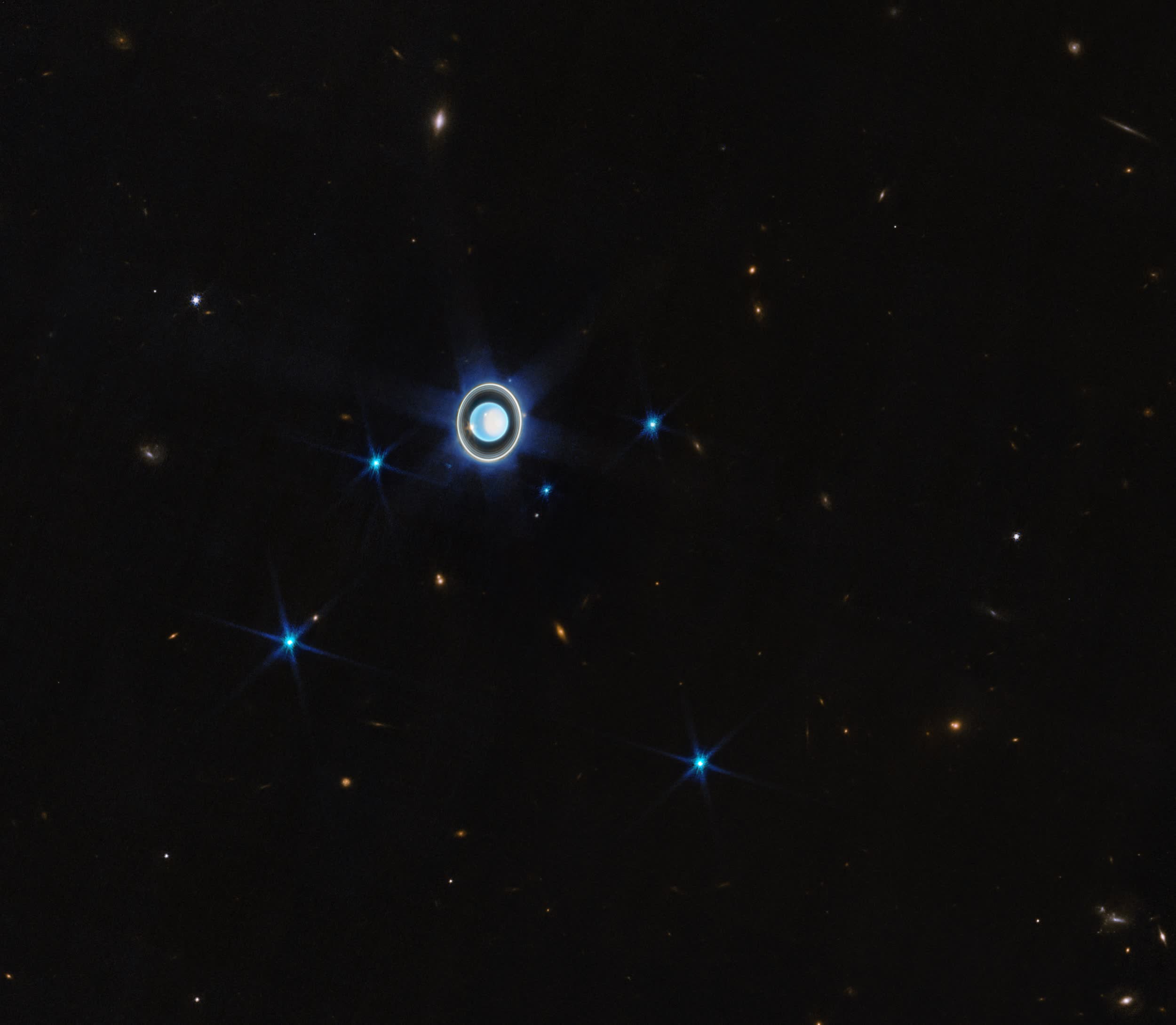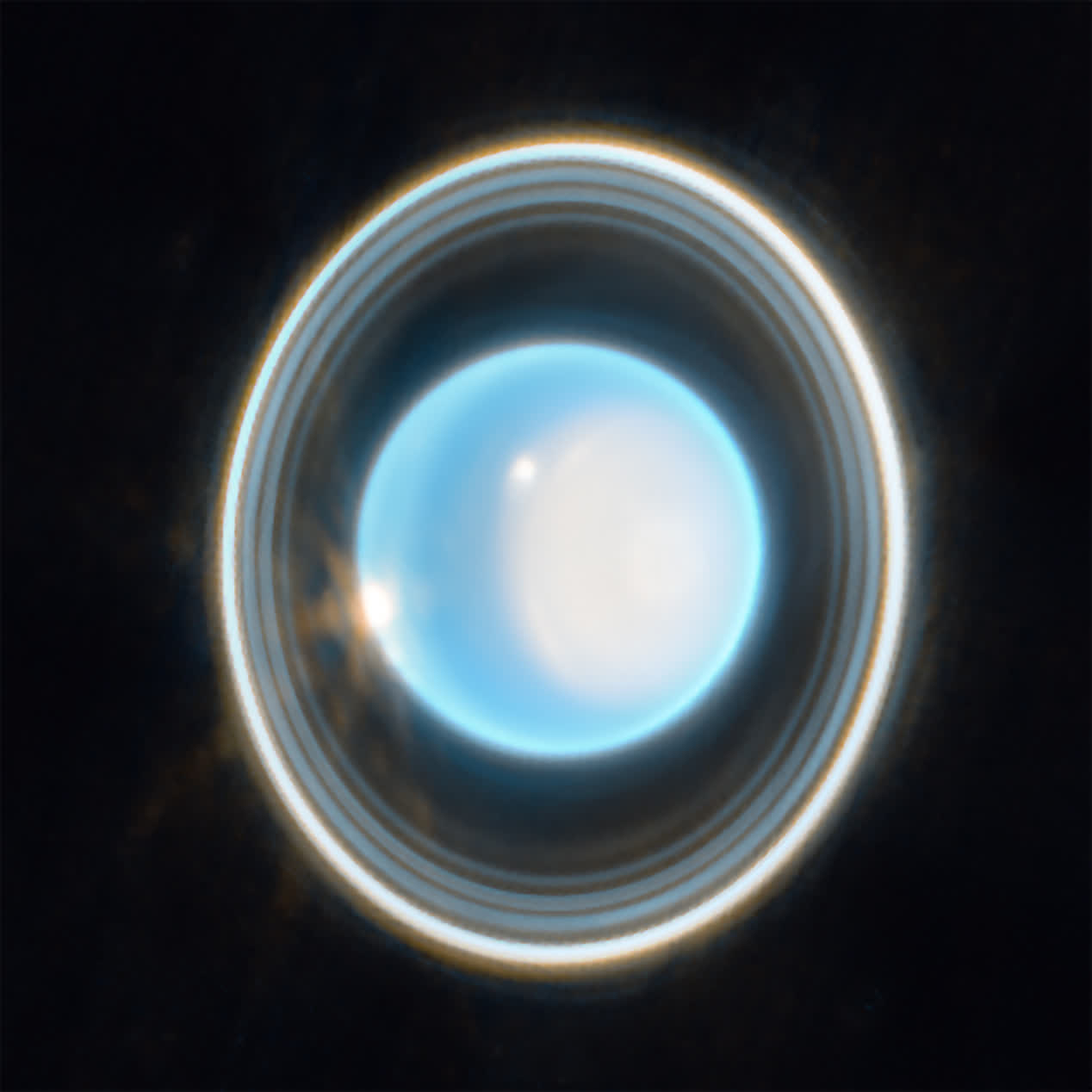The big picture: The James Webb Space Telescope captured a stunning image of ice giant Neptune last year. Now, it's time for our solar system's other ice giant to take center stage. Uranus has been the butt of jokes for years but the ice giant is quite fascinating when you take a deeper look.
The planet is unique in that it rotates on its side (axial tilt of 97.77 degrees), which leads to seasonal changes unlike any other planet in our solar system. Uranus takes 84 years to orbit the Sun and during that time, each pole gets about 42 years of continuous sunlight followed by 42 years of total darkness.
Uranus was discovered by William Herschel in 1781. The seventh planet from the Sun is one of just four in our solar system with rings alongside Saturn, Jupiter, and Neptune.
Webb's image of Uranus was captured with the observatory's near-infrared camera (NIRCam) on a 12-minute exposure with two filters at 1.4 and 3.0 microns. A zoomed-in view reveals 11 of the planet's 13 known rings as well as its sun-facing polar cap and a couple of clouds that are likely linked to storm activity. NASA said Webb excelled at capturing the dynamic range of Uranus' atmosphere.
The northern pole, which is visible here, is currently experiencing late spring. Summer won't arrive on the ice giant's norther pole until 2028.
The wider view highlights six of Uranus' 27 known moons; the others are too small and faint to be seen with just a 12-minute exposure. Future Webb observations with longer exposure times should bring additional details into focus.
Other celestial bodies including several galaxies can also be seen in the background.
NASA's Voyager 2 probe came within 50,600 miles of Uranus during a flyby on its way to interstellar space in 1986. The probe beamed back a trove of valuable data and images, and helped scientists discover 11 new moons and two new ring systems. During Voyager 2's visit, it was summer at the south pole.
https://www.techspot.com/news/98235-ice-giant-uranus-glows-bright-webb-telescope-snapshot.html

